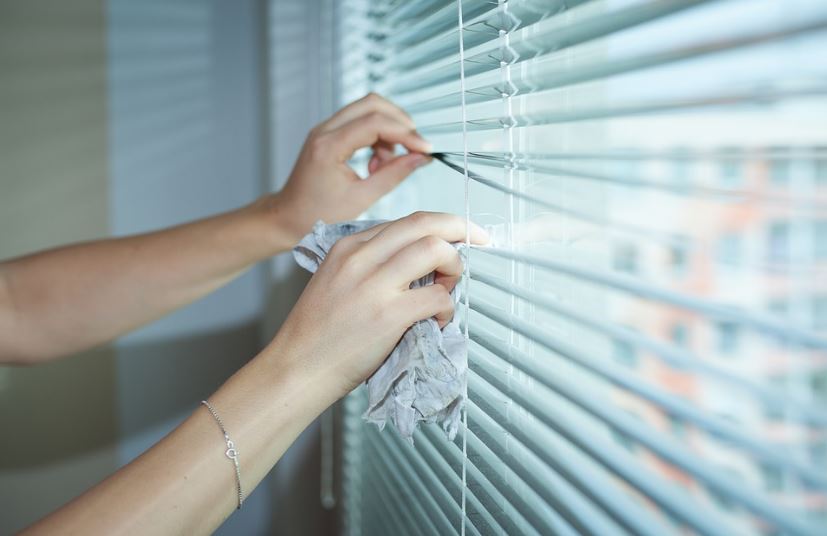Getting the home to look and feel exactly as you desire can take time. It can also be difficult to understand what works best in different rooms. Should you use throws on the sofa? Do scatter cushions serve any purpose? And what about window treatments?
Some areas are clear. A small window on a landing would benefit more from a blind than a curtain for instance. If you want to make your home look like a castle then you would use long curtains and drapes instead of blinds.
However, it can still be confusing to match the right window treatments to each room. And then there is another conundrum, can you mix different window treatments in the same home, or the same room even?
The history of curtains and blinds
These window treatments go back a long way, curtains in particular. There is evidence of curtain use from excavation sites in Pompeii, and Olynthus. It is said that curtains may date as far back as 3000 BC.
It is likely that curtains then were used as room dividers, and as rudimentary door covers. They were used in homes in England in the 16th century to keep the cold at bay.
Blinds came later in the 18th century, during the 1750s the first blinds were designed and patented the next decade. Today, easy fit roller blinds and curtains still provide practical uses, but they offer aesthetic value too.
Why would you want to mix curtains and blinds in a home?
As mentioned above, curtains and blinds offer practical uses as well as look good. This is one possible reason to use both treatments in one building.
Blinds are easier to clean than drapes so they fit certain rooms better. However, curtains and drapes can provide a certain feel to a room, as well as add warmth.
Blinds keep the light out, or let it in, and are easy to adjust. Curtains though can add some insulation to a room as well as bring a level of privacy.
What are the practical reasons for having blinds in a home?
The bedroom and bathroom in particular would benefit from extra privacy. Often a bathroom will have glazed windows, but this isn’t always the case. Therefore adding some form of window treatment prevents anyone from being able to see in.
Blinds in particular fit this purpose for bathrooms. They are very useful for kitchens too. This is because steam can be generated in bathrooms and kitchens which can lead to mold growing on curtains. Blinds can be far easier to wipe down if you choose the right materials.
Unlike curtains, window blinds are perfect for when the light needs to be limited and controlled easily. They can also come with flame retardant treatments – useful for the kitchen or even an outside covered BBQ area.
Which rooms would most benefit from blinds instead of curtains?
Certainly, the bathroom and kitchen would benefit from having blinds, but there are other areas too.
If you have an attic conversion you may well have sloping windows. It should be obvious that curtains will be of no use here. However, there are special blinds designed for this purpose.
Another area that blinds work well in is the newly popular home office. According to Small Biz Trends, there will be over 36 million Americans working at home by 2025.
The UK tells a similar story of the growing popularity of remote working with 5.6 million people being employed this way in 2020. This might mean a lot of blinds being sold over the next few years. Blinds work well in this area as working on a computer for long hours is helped when there is adequate natural lighting.
Can you put both blinds and curtains on the same window?
Now it should be clear that blinds and curtains can work well in the same home but on the same window? Why would you want to double your window treatments?
Well, there are some practical reasons for doing this and some aesthetic ones.
Combining both blinds and curtains can mean that you have real control over how much light comes into your room. The curtains offer much aesthetic value to the room, while the blinds allow easy control over sunlight.
Combining both of these treatments can also make your windows look taller, and wider when done correctly. So you see, spending time choosing between blinds and curtains may be futile.
Summary
Installing both curtains and blinds on the same window may seem odd to some, but having both treatments in the same home shouldn’t be dismissed.
Dining rooms, bedrooms, and living rooms may look great with curtains, but blinds can play a big part in the home too. Sloping windows, home offices, kitchens, bathrooms, and conservatories all work very well with blinds.
Designing the look of a room, or a makeover for a home can be great fun. Why dismiss the option to have more than one window treatment through your home when you could be giving your rooms their own look?

